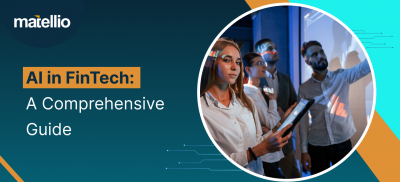
The travel and hospitality industries have been greatly impacted by the advancement of technology in recent years. The term “computer vision” describes a machine’s capacity to analyse and comprehend visual information from its environment. This technology is being used in the tourism and hospitality sectors to improve customer experience, operational efficiency, and safety and security.
The way computer vision AI is transforming the travel & hospitality industry is impressive, from automated check-in to facial recognition technologies. Today, we’ll examine how computer vision technology is reshaping the travel and hospitality sectors in this blog, as well as what this means for both consumers and businesses.
Computer vision in the travel and hospitality industry refers to the use of artificial intelligence and machine learning algorithms in travel and hospitality software to analyze images and videos captured by cameras, drones, or other devices. Computer vision solutions enable hotels, airlines, cruise lines, and other businesses in the travel industry to improve the customer experience, enhance safety and security, and optimize their operations. Computer vision AI has the potential to revolutionize the travel and hospitality industry by enabling businesses to provide better customer experiences and streamline operations. Here are some of the challenges that computer vision solutions can solve in this industry: Computer vision solutions can help to enhance security at airports, hotels, and other travel destinations by identifying potential threats through facial recognition, object detection and crowd analysis. It can be used in surveillance systems to monitor video feeds from security cameras and can track suspicious activities. Computer vision can speed up the check-in and checkout process by allowing guests to check in or check out by scanning their face or ID cards, thus saving time and eliminating the need for long lines. Computer vision can help hotels offer personalized services by recognizing guests and providing tailored recommendations and services. Computer vision can help hotels and other hospitality businesses track inventory, monitor supply levels, and identify when items need to be restocked, which can help reduce waste and optimize resources. Also Read: How Inventory Management Software Development Can Help Overcome Business Challenges Computer vision can be used to create augmented reality navigation tools to help guests find their way around large hotels, airports, and other travel destinations. Computer vision can be used to analyze customer behavior and preferences, allowing for more targeted and effective marketing campaigns. Computer vision can help enable contactless payments, allowing guests to pay for services without the need for physical contact, which is particularly important in the current climate. Computer vision is an area of artificial intelligence that involves the automatic extraction, analysis, and understanding of information from digital images or videos. In the travel and hospitality industry, computer vision AI is being used to enhance the customer experience, improve operational efficiency, and increase security. Here are some examples of how computer vision solutions are being used in the travel and hospitality sector: Computer vision AI can be used to scan guests’ faces and verify their identities, enabling them to check-in and check-out of hotels seamlessly. This reduces waiting time and improves the overall guest experience. Computer vision technology can be used to monitor guests and detect unusual behavior in real time. This can help hotels to identify and address potential security threats, prevent unauthorized access and ensure the safety of their guests. Computer vision solutions can analyze guests’ behavior and preferences to provide personalized recommendations for activities, food, and drinks. This can help hotels to improve guest satisfaction and drive revenue. Computer vision technology can be used in parking to improve the overall parking experience for customers. It can automate parking by parking spot detection to provide a seamless experience and also be used in license plate recognition for security and safety points of view. Computer vision technology can be used to monitor inventory levels of food and beverage items in hotels and resorts. This can help management to optimize the ordering process and reduce wastage. Computer vision technology can create virtual tours of hotels, resorts, and other tourist destinations, enabling potential guests to experience the property before booking. This can help hotels to improve their marketing and increase bookings. By using computer vision solutions to analyze customer traffic, businesses in the travel and hospitality industry can gain valuable insights into customer behavior, optimize their operations, and improve the customer experience. In travel software solutions, vision bots can be used to provide personalized recommendations based on a traveler’s preferences and interests. Computer vision technology is making a significant impact in hospitality software, particularly in the area of facial recognition. Facial recognition is being used in check-in and security, fraud detection, etc. Also Read: Image Recognition App Development – Features,Benefits and Use Cases Computer vision AI in sentiment analysis can be used to improve customer experience, automate tasks, and gain valuable insights into customer preferences in the travel and hospitality industry. Through emotion analysis, it can analyze social media posts, reviews, and other customer feedback to determine how customers feel about a product, service, or experience. This information can be used by businesses to improve their products and services, as well as to create targeted marketing campaigns. Also Read: AI-driven Sentiment Analysis- Benefits, Use cases and Implementation Computer vision systems can be used to automate the process of scanning luggage tags and matching them to the correct baggage. These systems can use image recognition algorithms to read barcodes or other identifying marks on luggage tags, eliminating the need for manual scanning by staff members. Airports are using object detection and image recognition systems to monitor the movement of luggage throughout the airport, from check-in to boarding and disembarkation. This can help to identify any issues with the delivery of luggage, such as delays or lost items, and enable staff to take immediate action to resolve the problem. Computer vision can be used to analyze the contents of the luggage, identifying any prohibited items or potential security risks. This can improve airport security and ensure that passengers and staff are kept safe. By leveraging the power of computer vision, companies can gain a competitive advantage by improving customer experiences and sales processes. Computer vision can help optimize sales in the travel and hospitality industry is through the use of image recognition technology, emotion analysis and attention detection technology. These technologies can be used to analyze images of hotel rooms, restaurants, and tourist attractions to identify what makes them attractive to potential customers. By using this information, businesses can tailor their marketing strategies and offer personalized recommendations to customers based on their preferences. Also Read: How Can AI Help Improve Customer Experience? Computer vision is a rapidly growing field of artificial intelligence that has many applications in the travel and hospitality industry. First and foremost, the business needs to define their requirements for computer vision in the travel and hospitality sector. Identify the areas of the business that could benefit from computer vision solutions, such as security, customer service, and personalized experiences. Once they are clear with their requirements, it will help them to proceed in a right direction of the development phase. Once the use case or requirements are defined, the business needs to gather data to develop the computer vision solution. This may include images, videos, and customer behavior data from different sources. This database is benefiting to develop an AI-based solution as the larger and more organized the datasets, the better functionality of computer vision AI. In this step, AI development services can assist you in integrating computer vision into your solution by helping you analyze needs, researching current solutions, and studying existing ones. Based on your future objectives, including scalability, requirements, implementation, etc., they may direct you in the appropriate direction and create a computer vision-enabled solution. Businesses can employ staff augmentation services to increase the number of Al developers on their projects, especially in the travel and hospitality industries where core development teams are common. Companies may save money, maintain quality, and grow more quickly with the aid of staff augmentation. The business needs to choose the right computer vision technology based on the requirements, data, and budget. This may include machine learning, deep learning, convolutional neural network (CNN), recurrent neural networks (RNN), and other computer vision APIs. Here comes the important role of a professional AI development company as they can assist you in choosing the right technologies according to your business requirements with their expertise. With the right technology in place, the business can start developing computer vision algorithms. This involves developing the algorithms using the right technologies and data gathered and fine-tuning the models to improve accuracy. The solution should be tested in a controlled environment to ensure that they are working as expected. This may involve setting up a test environment or conducting field tests. Once the solution has been tested and refined, it can be implemented in the business. This may involve integrating computer vision technology with existing systems and processes. It’s important to monitor the solution’s performance and improve them over time. This may involve collecting feedback from customers and employees or using real-time data to make improvements. Regardless of the difficult market environment, the travel and hospitality sector have a great potential. Businesses in the travel and hospitality industry can differentiate themselves from the competition by adopting technologies such as computer vision applications. Big shots in the sector, like Hilton and Emirates, are already setting the standard. Big businesses will be able to provide customers with experiences that are more unique and customized than ever before, thanks to computer vision in travel and hospitality software solutions. The impact of computer vision will increase as it becomes more intelligent. Starting now gives your company an advantage over the market and the chance to establish a strong business. However, if you are planning for your next big project, than hire an AI development company will be a wise choice. A professional enterprise AI solution development company can assist you with your specific business requirements and can simplify the development process. That’s where Matellio comes in play. With expertise and decades-long experience, Matellio caters professional AI development services and solutions. So, book a consultation call and discuss your project with our tech experts. What is Computer Vision in Travel and Hospitality Industry?

Benefits of Computer Vision in Travel and Hospitality Software

Enhancing Security
Streamlining Check-in and Checkout
Improving User Experience
Improving Inventory Management
Assisting in Navigation
Marketing and Advertising
Enabling Contactless Payments
Top Use Cases of Computer Vision in Travel and Hospitality Software

Smart Check-In and Checkout
Security and Safety
Personalized Recommendations
Smart Parking System
Inventory Management
Virtual Tours
Analyzing Customer Traffic
Travel Chatbots
Facial Recognition
Sentiment Analysis
Luggage Management
Sales Optimization
How to Implement Computer Vision in Travel and Hospitality Software Development?
The travel and hospitality software development process involves several key steps that are critical to creating a successful AI solution. Here we’ve listed down some of the following important implementation phases: 
Define the Requirements
Gather Data
Hire AI Development Company
Choose the Right Technology
Develop the Solution
Test the Solution
Implement the Solution
Monitor and Improve

Conclusion


